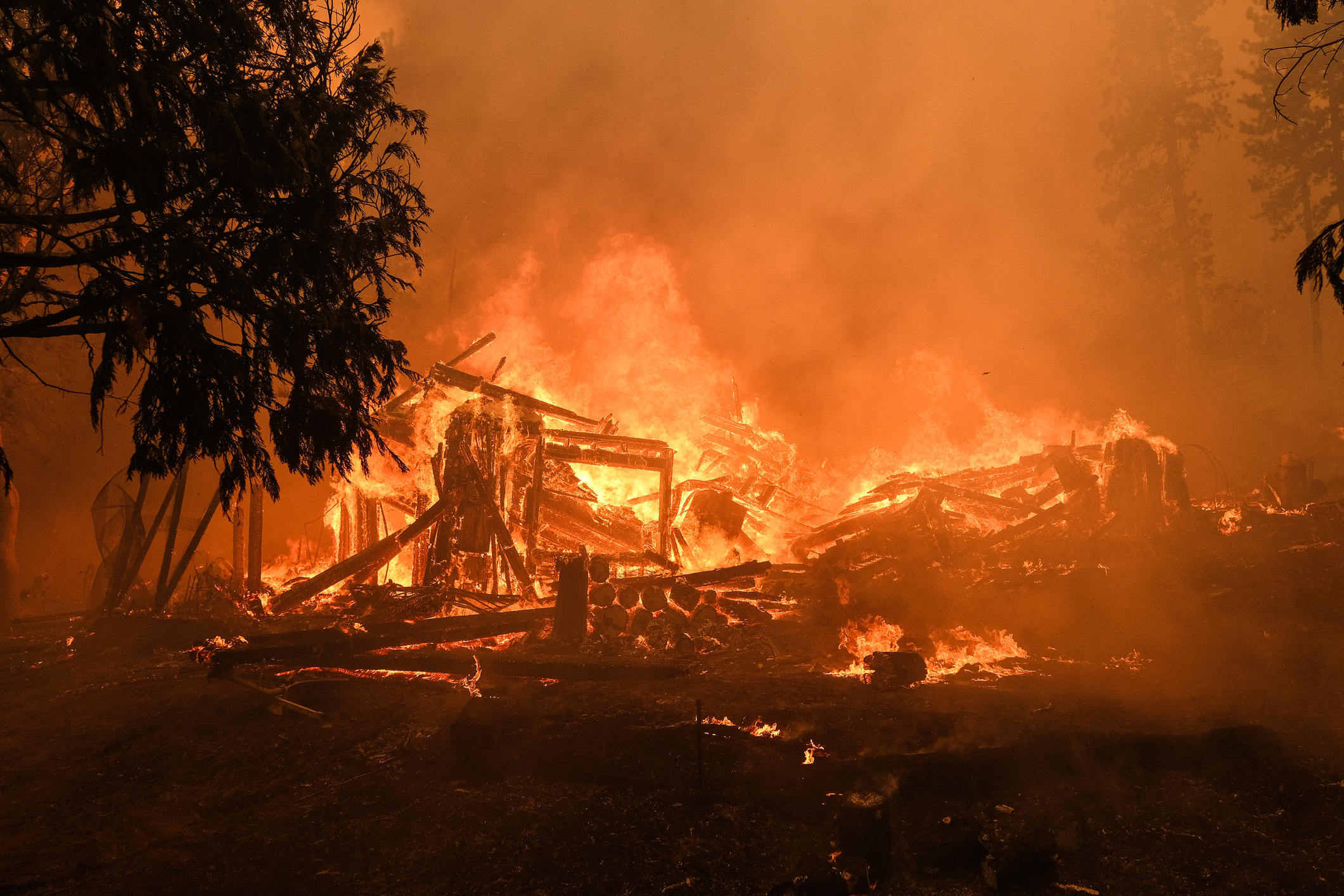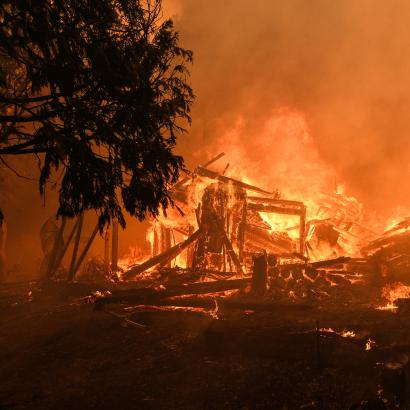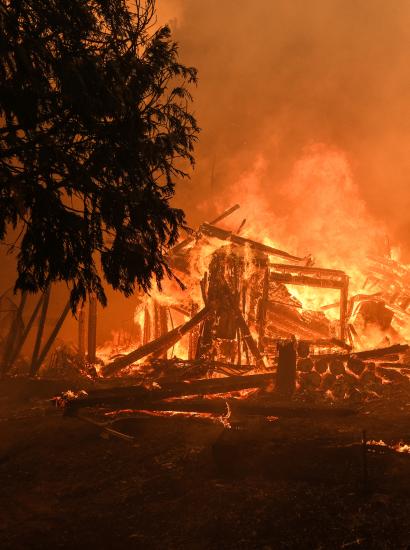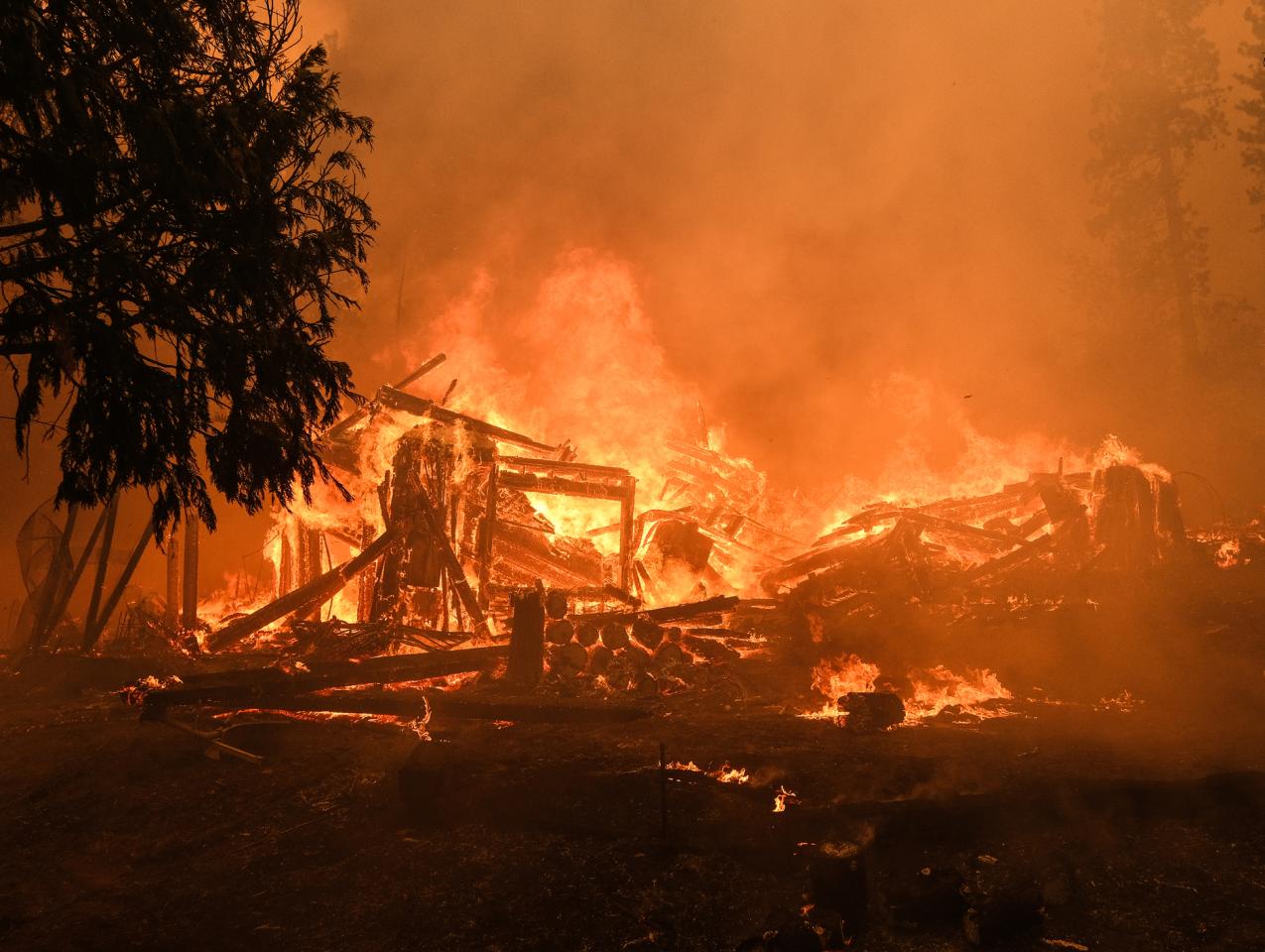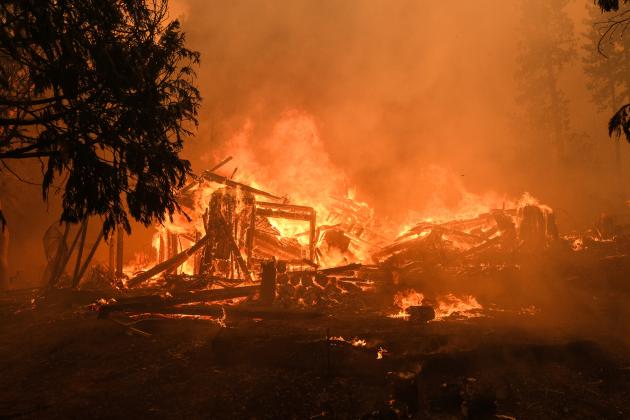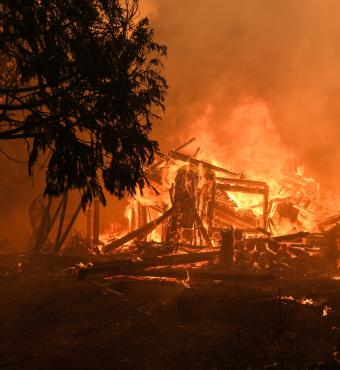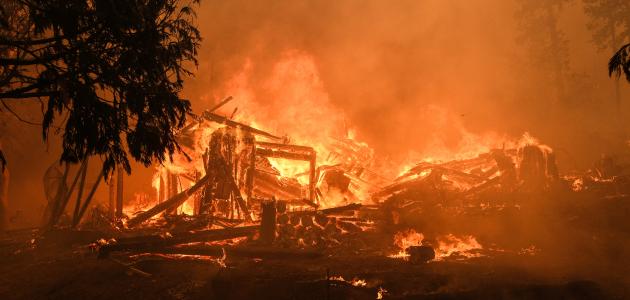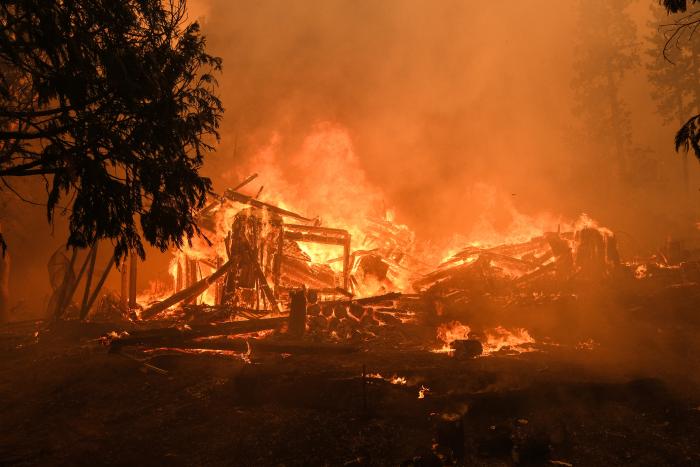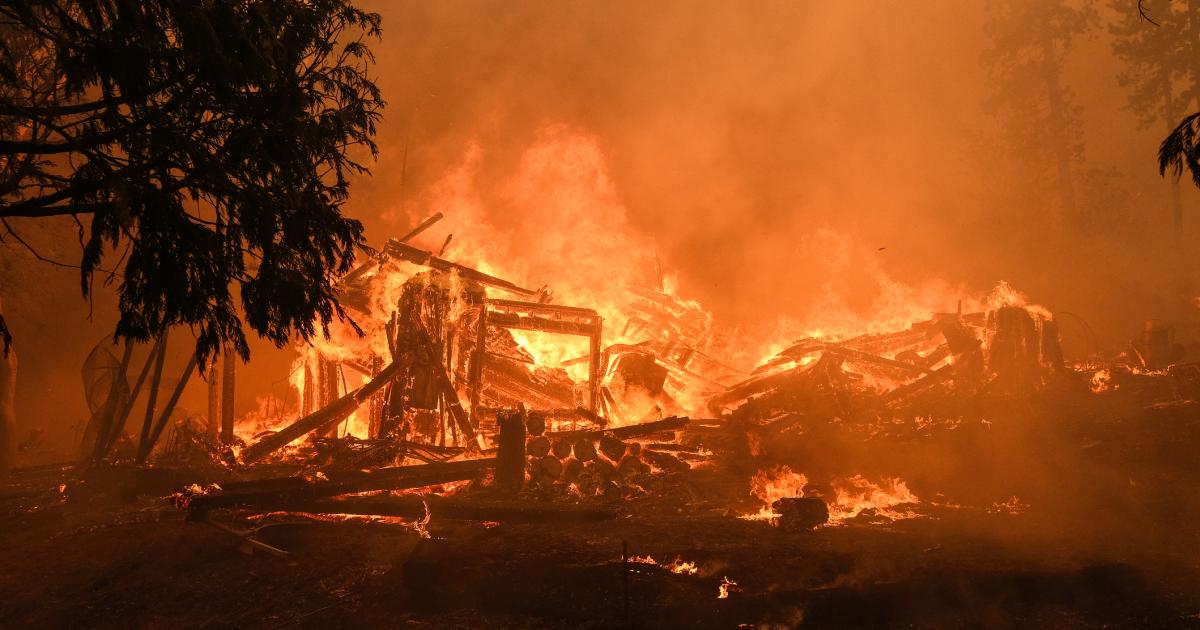- State & Local
- California
Los Angeles governance didn’t just fail a stress test this year; it wrote the exam in disappearing ink. This began with the Palisades Fire in January, which killed 12 people, destroyed 6,831 structures, and caused $20–$25 billion in damages.
When governance is effective, disasters expose heroism, fast response, minimal damage to life and property, and rapid recovery. When it is poorly managed, disorganized, and ineffective, disasters expose enormous deficiencies that turn what should be contained into unprecedented calamities. And nowhere is this more obvious perhaps than within the city and county of Los Angeles.
The Palisades Fire after-action documents from the city and county make the verdict plain. The internal review of the LA Fire Department (LAFD) describes an early staging location that was literally placed in the evacuation route for some residents, who then had to abandon their vehicles—cars that later had to be bulldozed off Palisades Drive so engines could get through. Communications lagged. Organization “was not clearly defined” for hours.
LA County’s consultant report about the fires https://lacounty.gov/2025/09/25/la-county-releases-after-action-review-of-alert-notification-systems-and-evacuation-policies-for-the-eaton-and-palisades-fires/ scrubs the language (they were paid about $1.9 million) but not the verdict: no single “point of failure,” just a bundle of them—outdated policies, inconsistent practices, and communications vulnerabilities across agencies. Their recommendations are obvious: clarify who orders evacuations, restructure emergency management, standardize training, modernize regional public safety (LA-RICS) communications. How is it possible that in 2025 a leadership consultant is having to teach the most basic and fundamental requirements for effective fire response and preparedness to the fire department in America’s second-largest metro area, one with a fire budget of nearly $900 million in the 2024–25 budget? And it is notable that several fire agencies were not willing to participate in the McChrystal investigation.
The public narrative is worse. ABC7 reports that LAFD described the Palisades ignition as an “undetectable” holdover from the New Year’s Lachman fire—something that can smolder underground and erupt later under extreme winds. A veteran LAFD firefighter told FOX 11 that the fire was “never fully extinguished” and that available heat-detection tools weren’t used during the week between Lachman and Palisades. The public deserves a transparent timeline detailing how this could have happened.
Los Angeles didn’t need to pay nearly $2 million to a consultant to find out what was wrong. The Los Angeles city controller had previously written a report focused on the Los Angeles Department of Water and Power (DWP) that emphasized eliminating maintenance backlogs and using infrared, AI, and predictive analytics technologies. The controller’s letter concluded, “I urge City leaders and the DWP to adopt these recommendations to ensure that Los Angeles does the best it can to protect precious lives and property.” This report is now six years old. Among the governance failures during the Palisades Fire, the 117-million-gallon reservoir designed to protect the Palisades was empty, and had been empty for nearly a year, awaiting a repair to its cover.
What about recovery from the fire? Los Angeles County and City indicate they have significantly streamlined their permitting processes, yet the number of building permits issued to date represents less than 10 percent of the homes that were damaged or destroyed. As of October 19, the County’s permitting dashboard shows an average time to issue a permit of 81 days. As of October 19, the state’s recovery dashboard shows just four permits issued for Malibu, out of 165 applications received, and just 12 permits issued for Pasadena, out of 42 received.
The Palisades Fire, however, is not the only alarm revealing what is wrong with Los Angeles governance. Consider the $2 million settlement the Board of Supervisors paid County CEO Fesia Davenport because a voter-approved measure turns her appointed post into an elected office in 2028 and, she argued, caused her embarrassment and emotional distress, and cut short her career. The payout was approved in a closed session, labeled “confidential,” and made public only after reporters received the document. Normal procedure is to publicly report any claim above $100,000, though that clearly didn’t happen in this case.
There is also the potential problem of integrity among county employees. The district attorney charged 13 county employees from seven agencies with stealing $437,383 in unemployment benefits during the pandemic. The auditor-controller estimates total county exposures around pandemic unemployment fraud—by employees and by identity-theft criminals—at roughly $3.75 million. Statewide COVID-related unemployment fraud may have totaled as much as $32 billion, reflecting the fact that the state’s Employment Development Department held on to a woefully outdated IT system, one that should have been replaced long ago.
And then there’s homelessness— where Los Angeles is spending a lot, and may be losing some of that spending to fraud. In October, the US attorney announced two separate criminal cases tied to public funds for homeless housing: one involving a Beverly Hills executive accused of forging bank records connected to grants and another alleging that a Brentwood real-estate operator flipped a Cheviot Hills property to a developer of housing for the homeless—using deception to conceal the double-escrow markup from lenders financing the deal. Federal prosecutors called these two cases “the tip of the iceberg” in terms of going after misuse of public funds.
A major California developer of low-income housing has advised me over the years that there is so much money within the homelessness sphere, and so little oversight of how it is used, that a serious forensic investigation would identify an enormous amount of fraud and corruption. I was skeptical at first. I now believe he is spot-on with this assessment.
All of this intersects with the metric the city leans on to claim momentum in its fight against homelessness: the annual homeless count. The Los Angeles Housing Services Authority (LAHSA) reported a drop in homelessness in the City of Los Angeles and in the county this year, objectively better than the increases of prior years. But a RAND study released last week found that in in three neighborhoods (Hollywood, Venice, and Skid Row) the official Point-in-Pime (PIT) count captured only about 68% of unsheltered people. RAND’s inference: nearly 8,000 people may be missing from the city’s official tally in these areas (see their Figure 1), suggesting there may be as many as 80,000 homeless in LA County, rather than the official number of about 72,000. Rand’s estimate of the number of missing homeless suggests the number of total homeless in L.A. County is comparable to the city populations of Newport Beach, Hawthorne, and Alhambra.
It gets worse. Audits of LAHSA identified significant accounting and oversight issues at the agency. The most recent audit, which was released in association with a lawsuit filed against both the County and the City of Los Angeles, led a US district court judge to refer to LAHSA’s failure to account for billions of dollars in spending as “a slow train wreck.” A new county department will be taking over LAHSA’s responsibilities. And within the City of LA, nearly half of its record $1.3 billion homeless budget went unspent. The City Controller cited “a sluggish, inefficient approach” as the reason why.
Los Angeles County’s budget is about $48 billion, and the City of Los Angeles’s budget is nearly $14 billion, for a total of $62 billion. Angelenos should be receiving very high-quality city services, but from my perspective, they aren’t receiving what they are paying for. Enormous budgets without sufficient oversight and accountability lead to far less than what should be provided, reflecting inefficiency, ineffectiveness, and possibly fraud or other possible forms of criminal conduct.
With about 3.4 million households in LA County, spending totals over $14,000 per household. And with about 1.4 million households, LA city spending totals about $10,000 per household. That taxpayer money is largely provided by the Southern California workers and businesses that deliver $1.3 trillion in metro-area GDP. Angelenos should be receiving so much more from the local governments they fund. But this will only come about if voters elect more effective political leaders. If the broken trust, devastation, and ineffectiveness that came to light this year doesn’t lead voters to elect better leadership, then realistically, I don’t see any hope that Los Angeles will ever improve.







